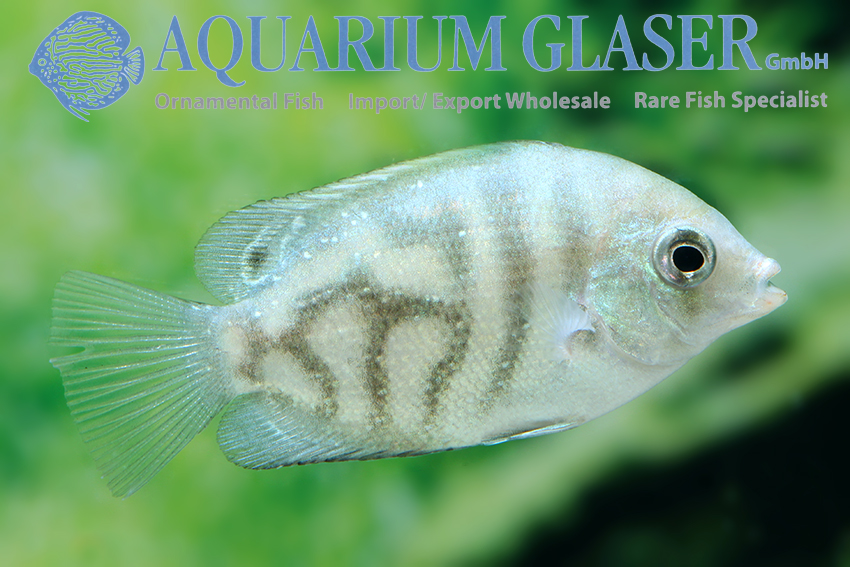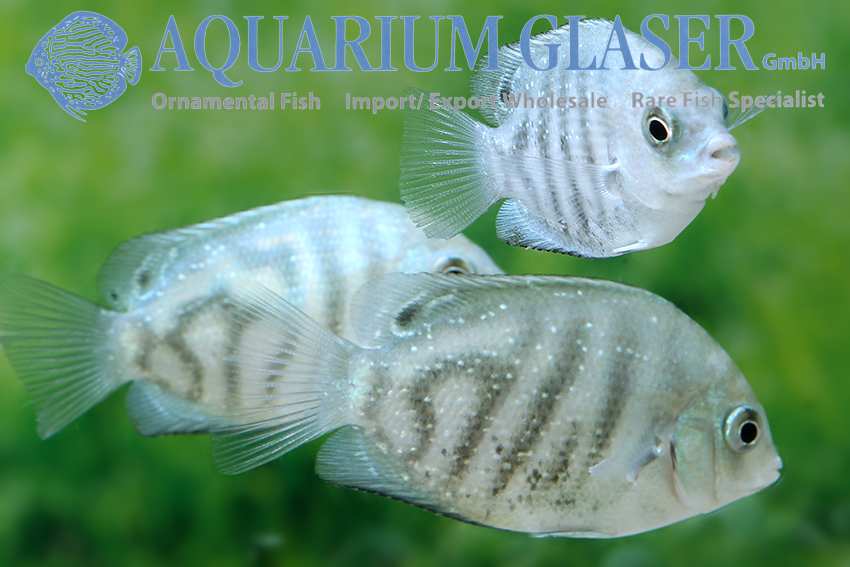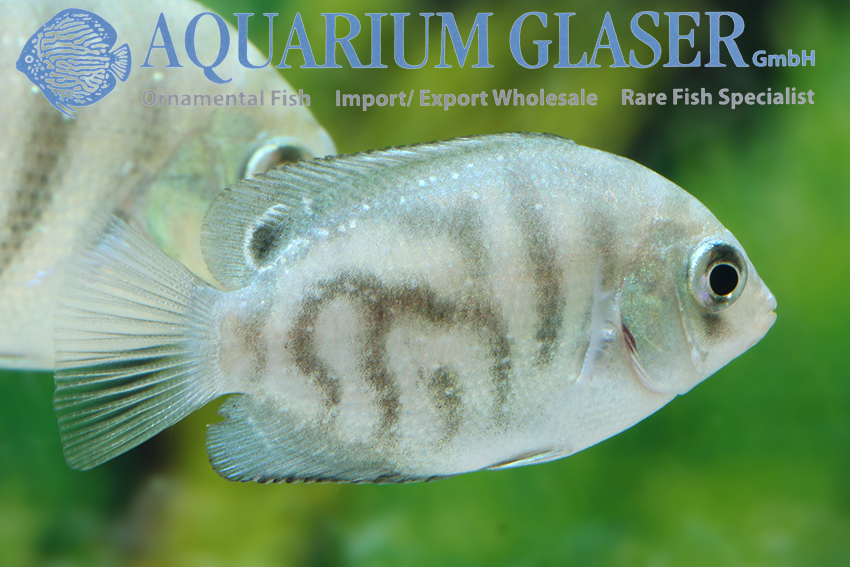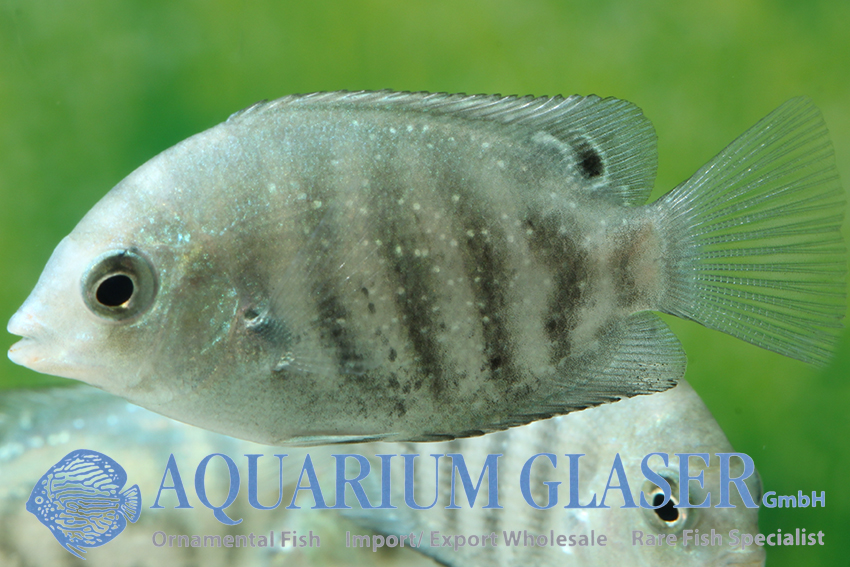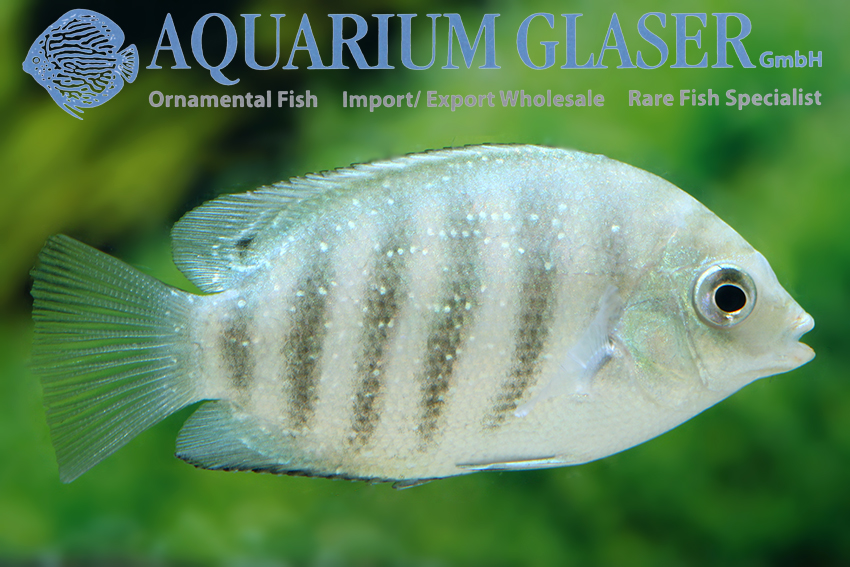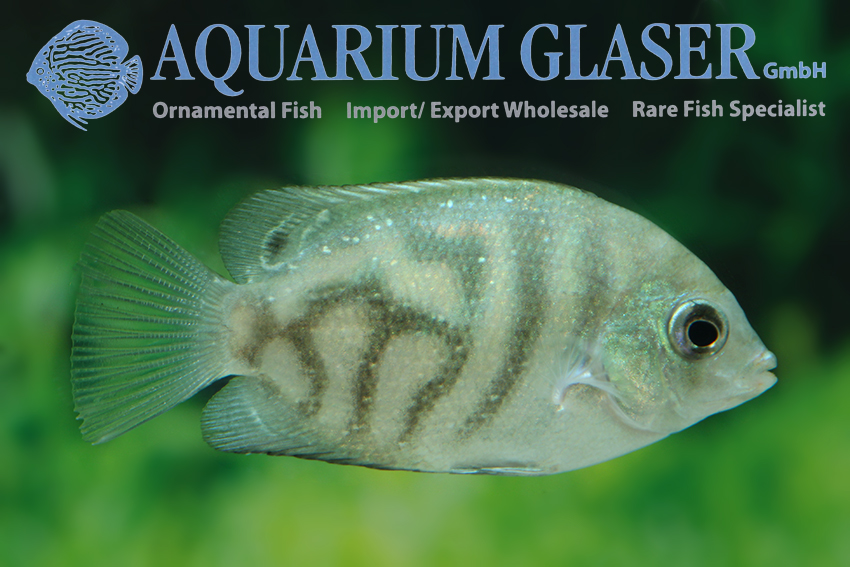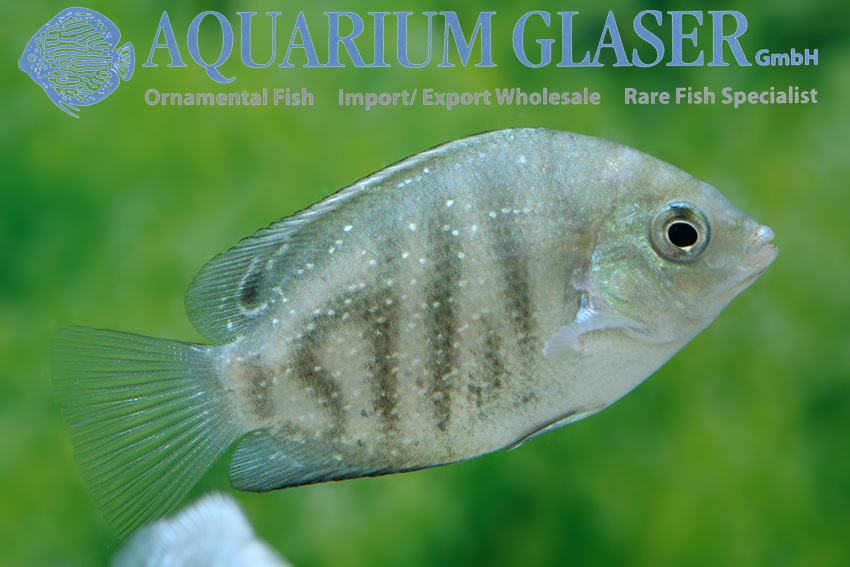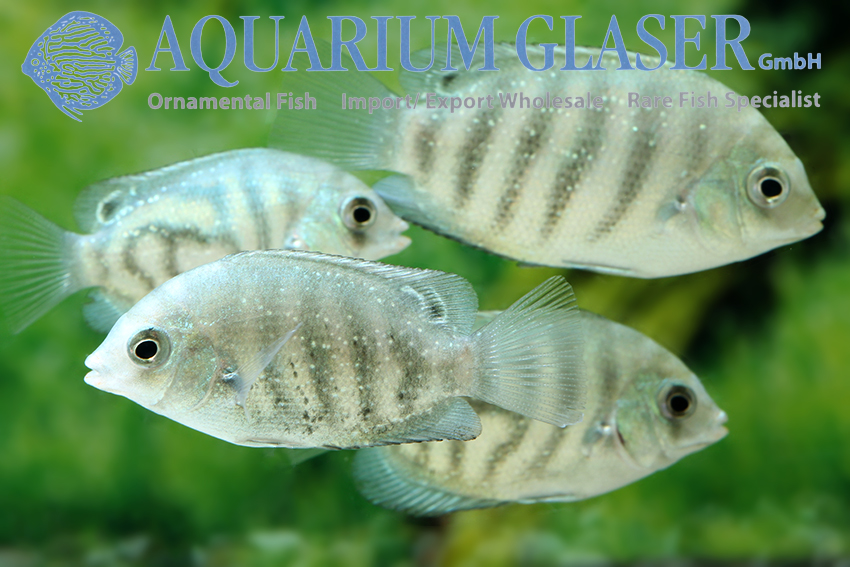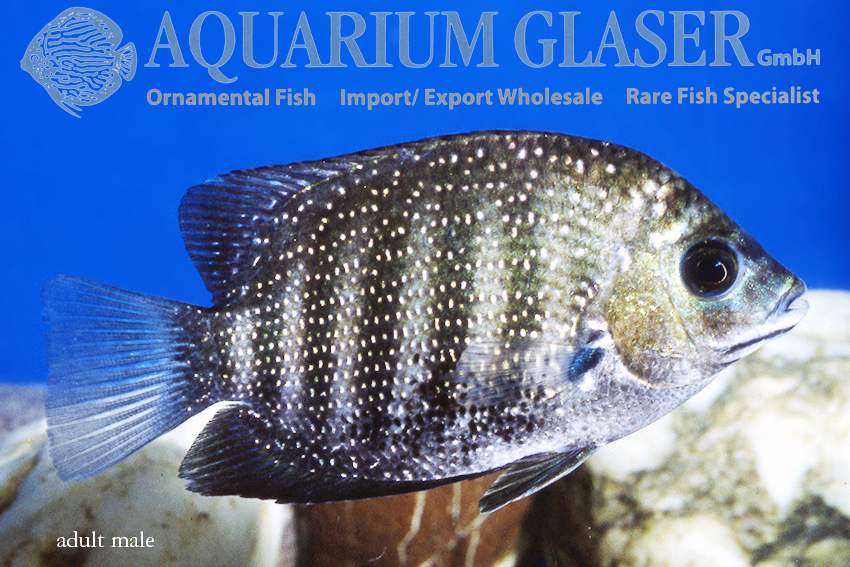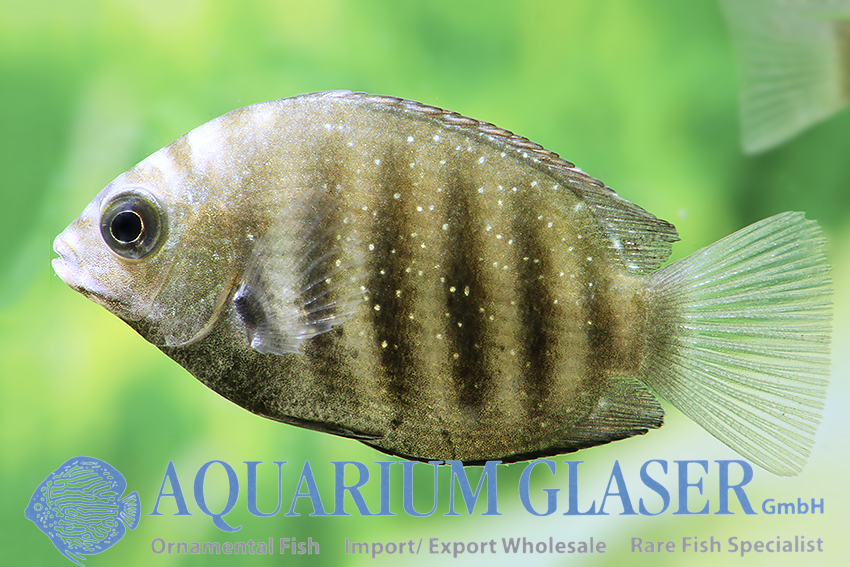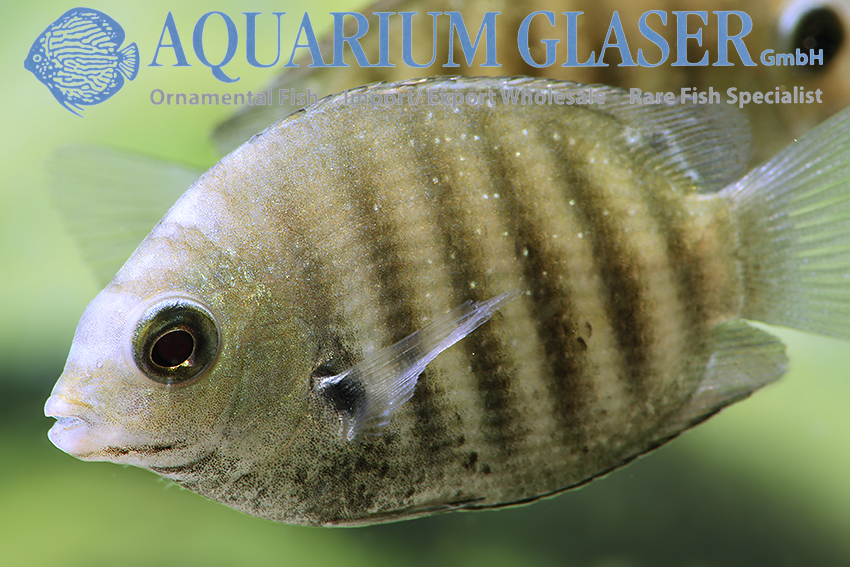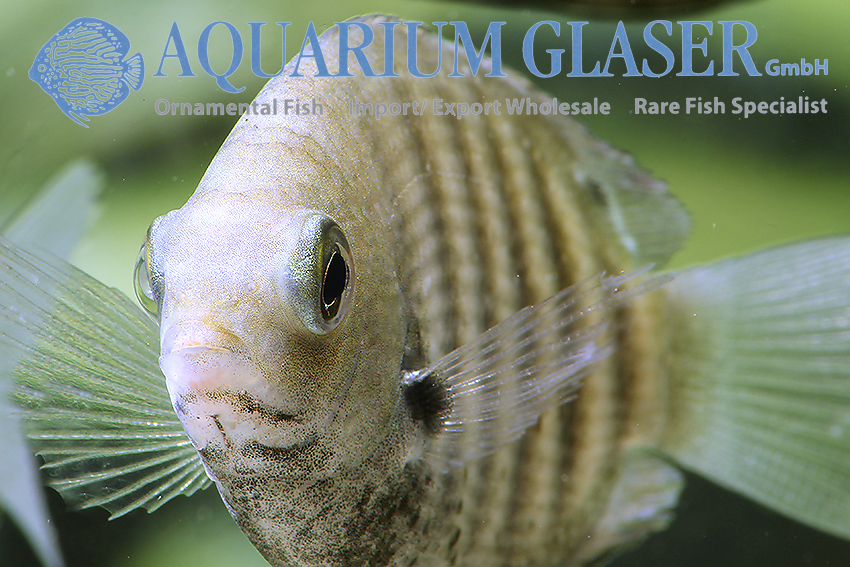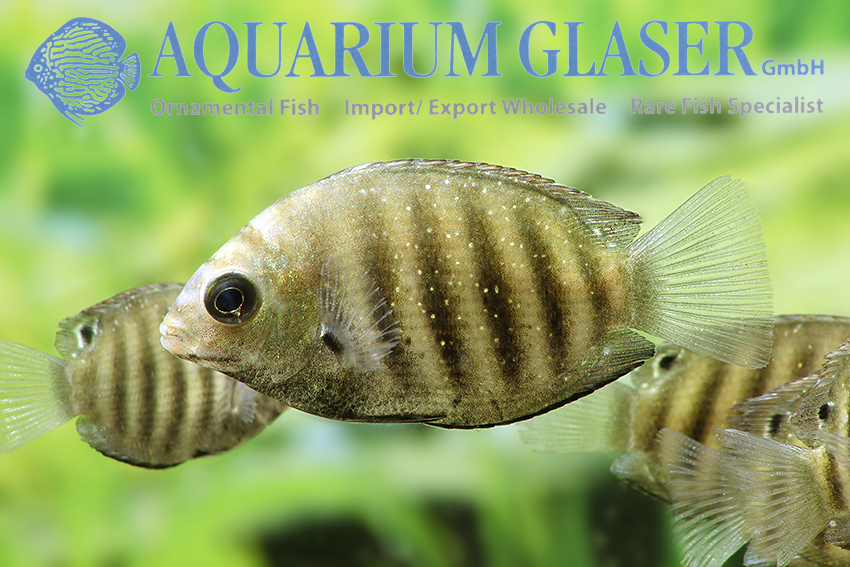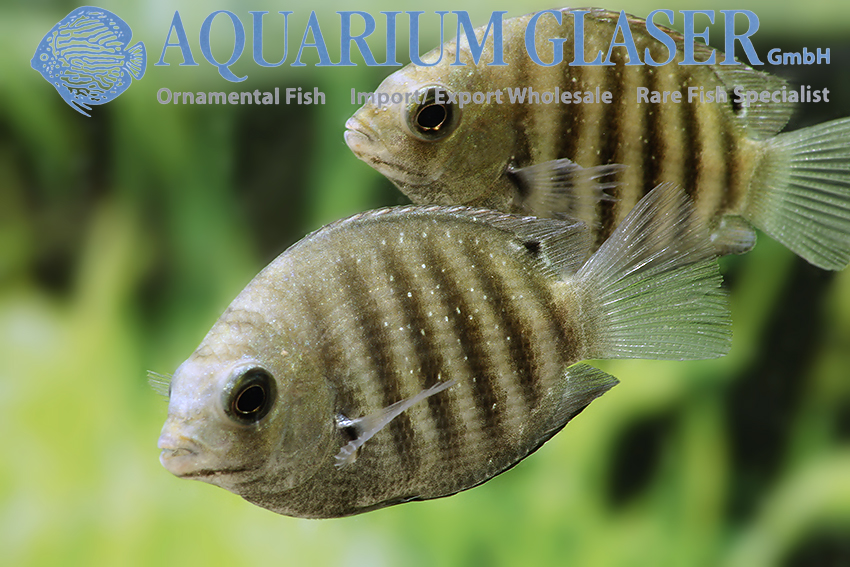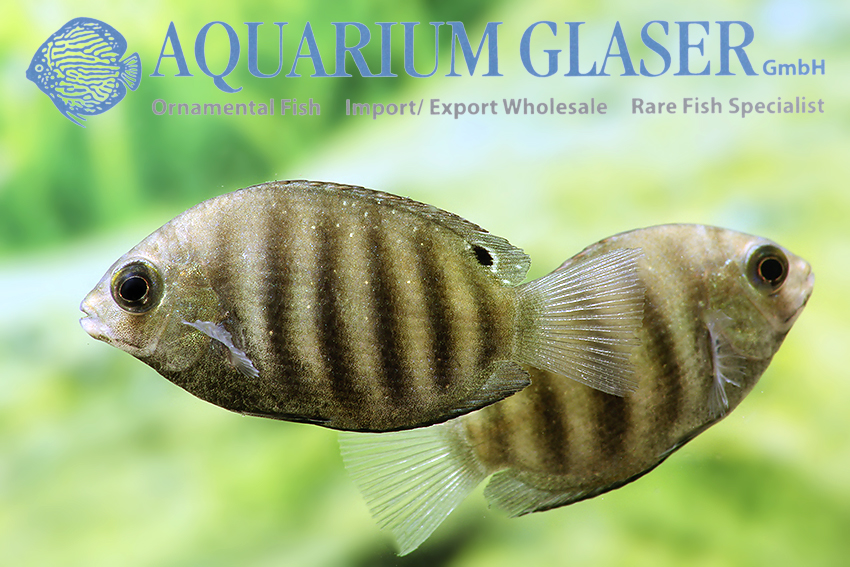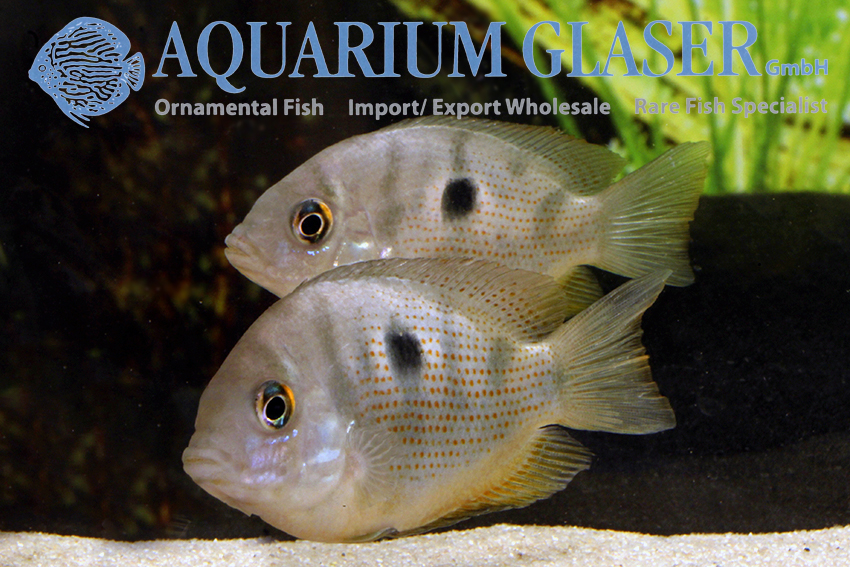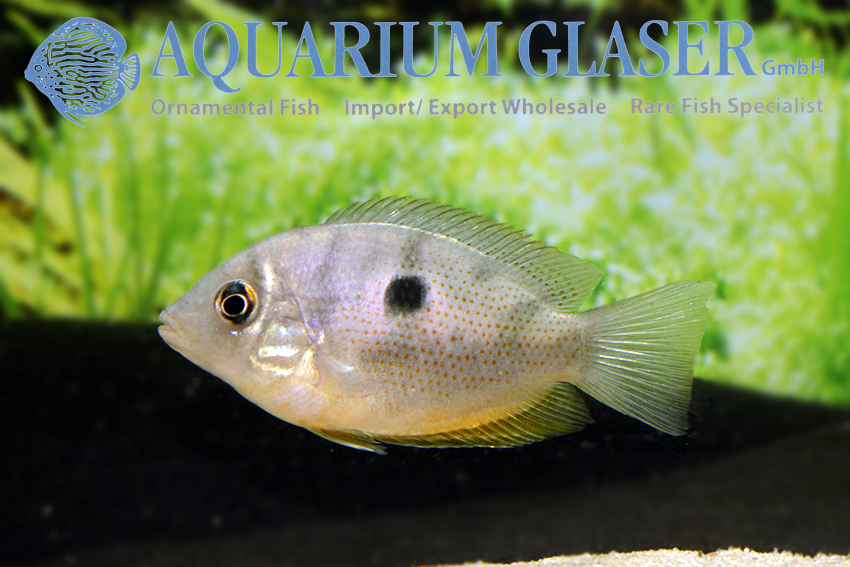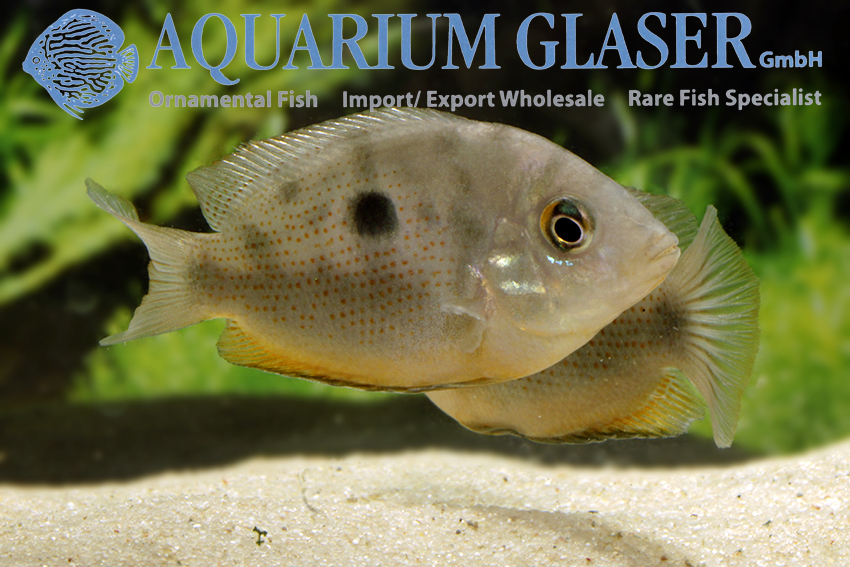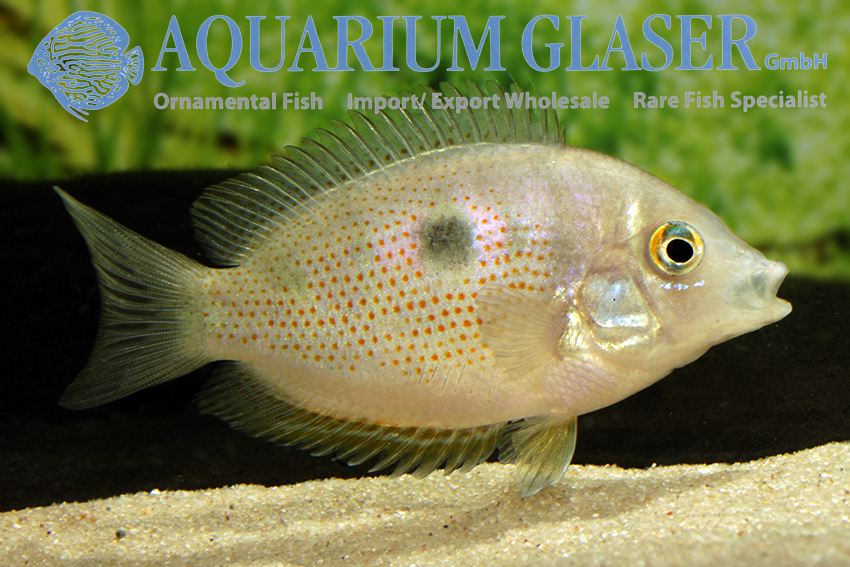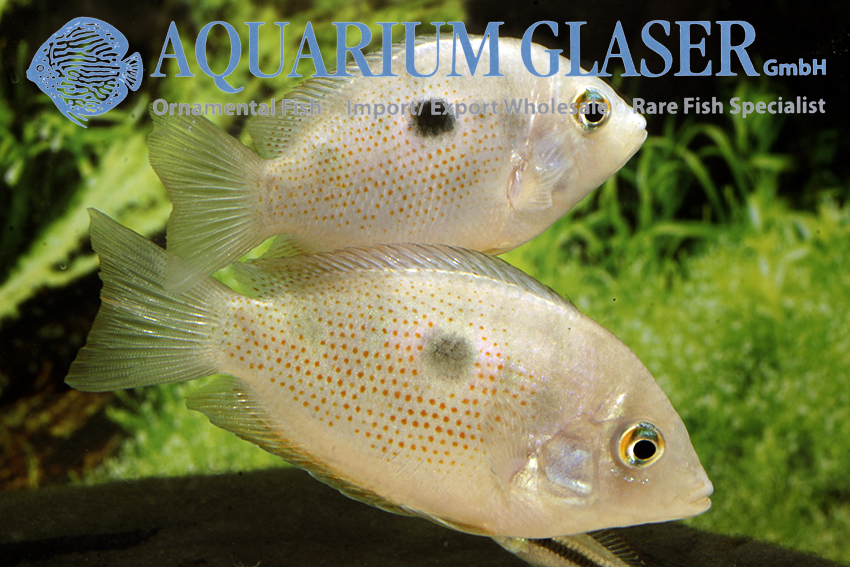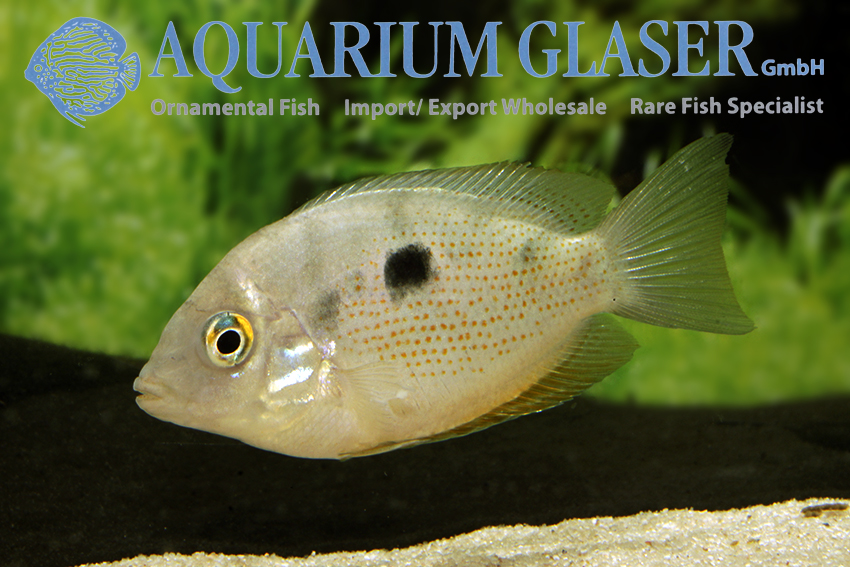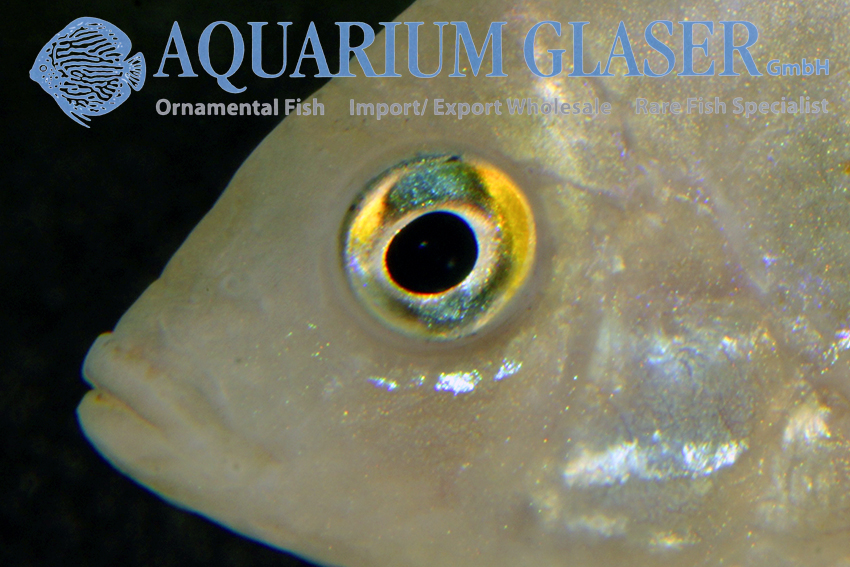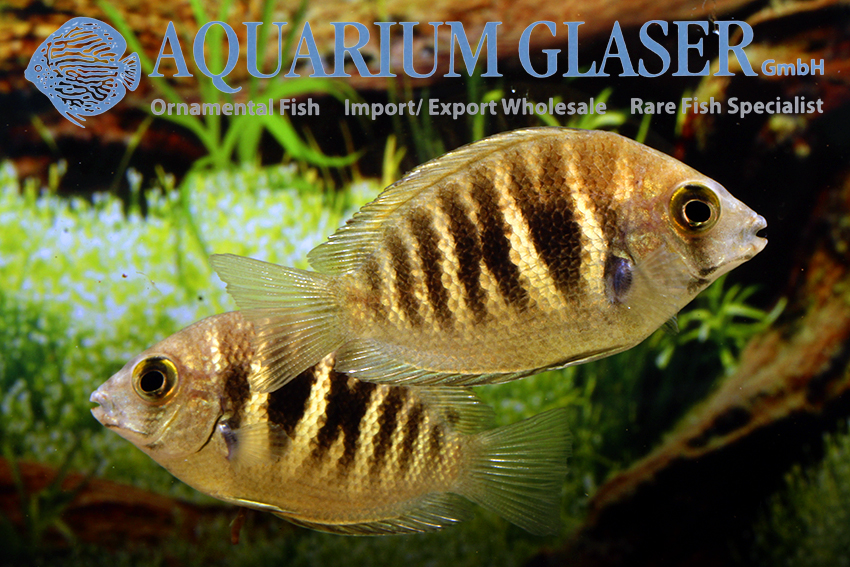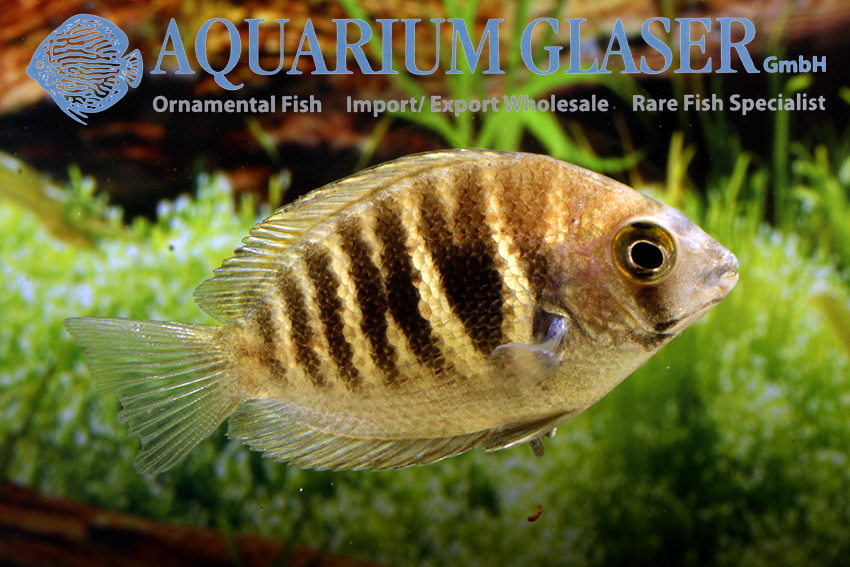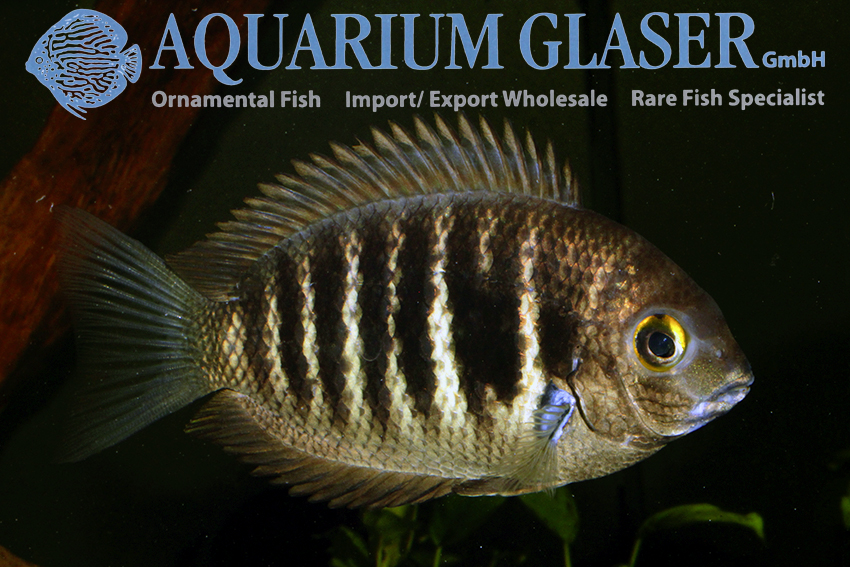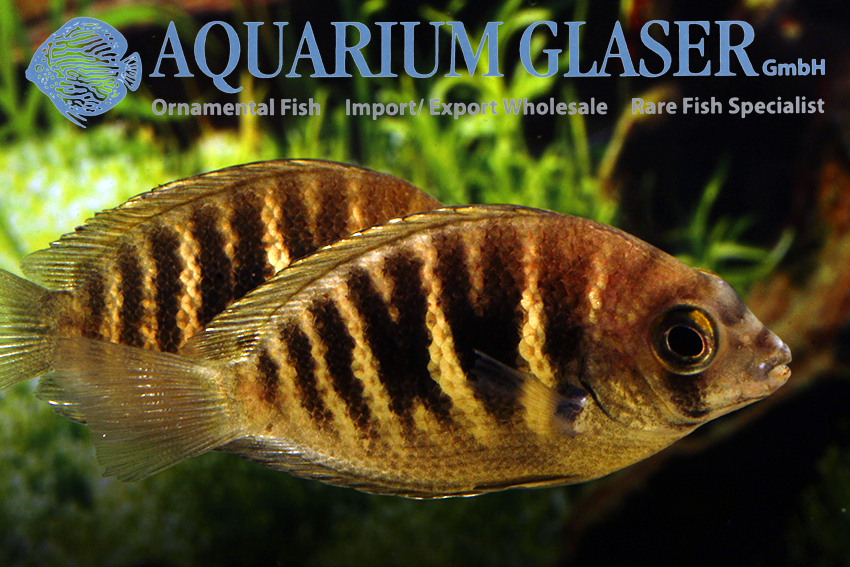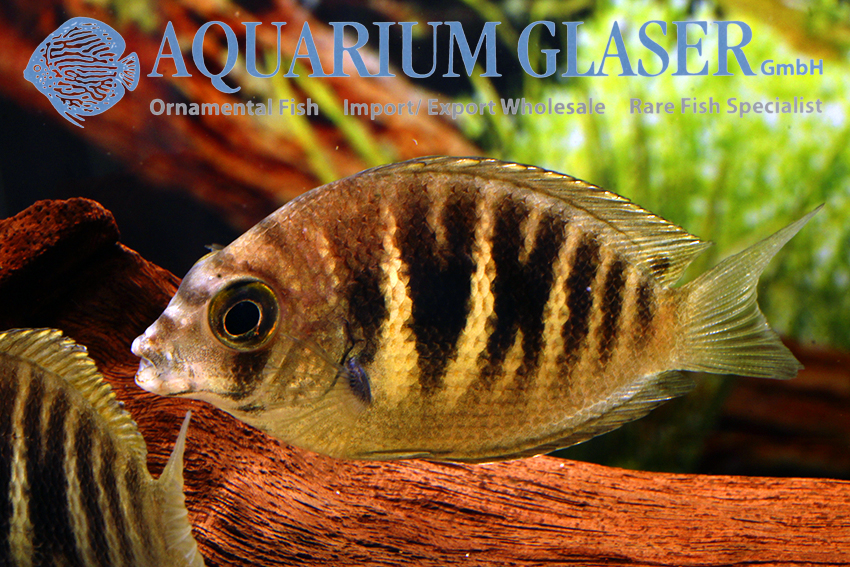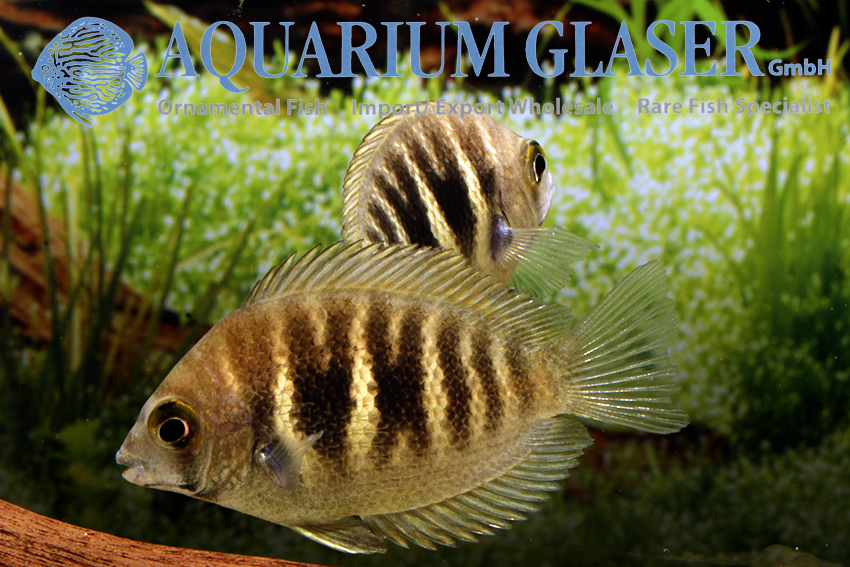Mostly we receive the Indian Pearl Cichlid (Etroplus suratensis) as wild catch from South India (formerly also from Sri Lanka) or as German offspring from zoo aquariums. Now, for the first time, we have imported bred ones from Indonesia; some specimens of these offspring do not show a stripe pattern, but have an irregular bow and scroll pattern on the back half of the body. In the wild, such fish would have little chance of survival. Juvenile Etroplus suratensis live in larger groups and whoever stands out in color quickly becomes the prey of a fish eater. But in the aquarium there are no predators and so such mutations can survive. One thing is for sure, they look very interesting!
For more information about Etroplus suratensis see https://www.aquariumglaser.de/en/fish-archives/etroplus-suratensis-2/
For our customers: the animals have code 415902 on our stocklist. Please note that we supply only wholesale.
Text & photos: Frank Schäfer





